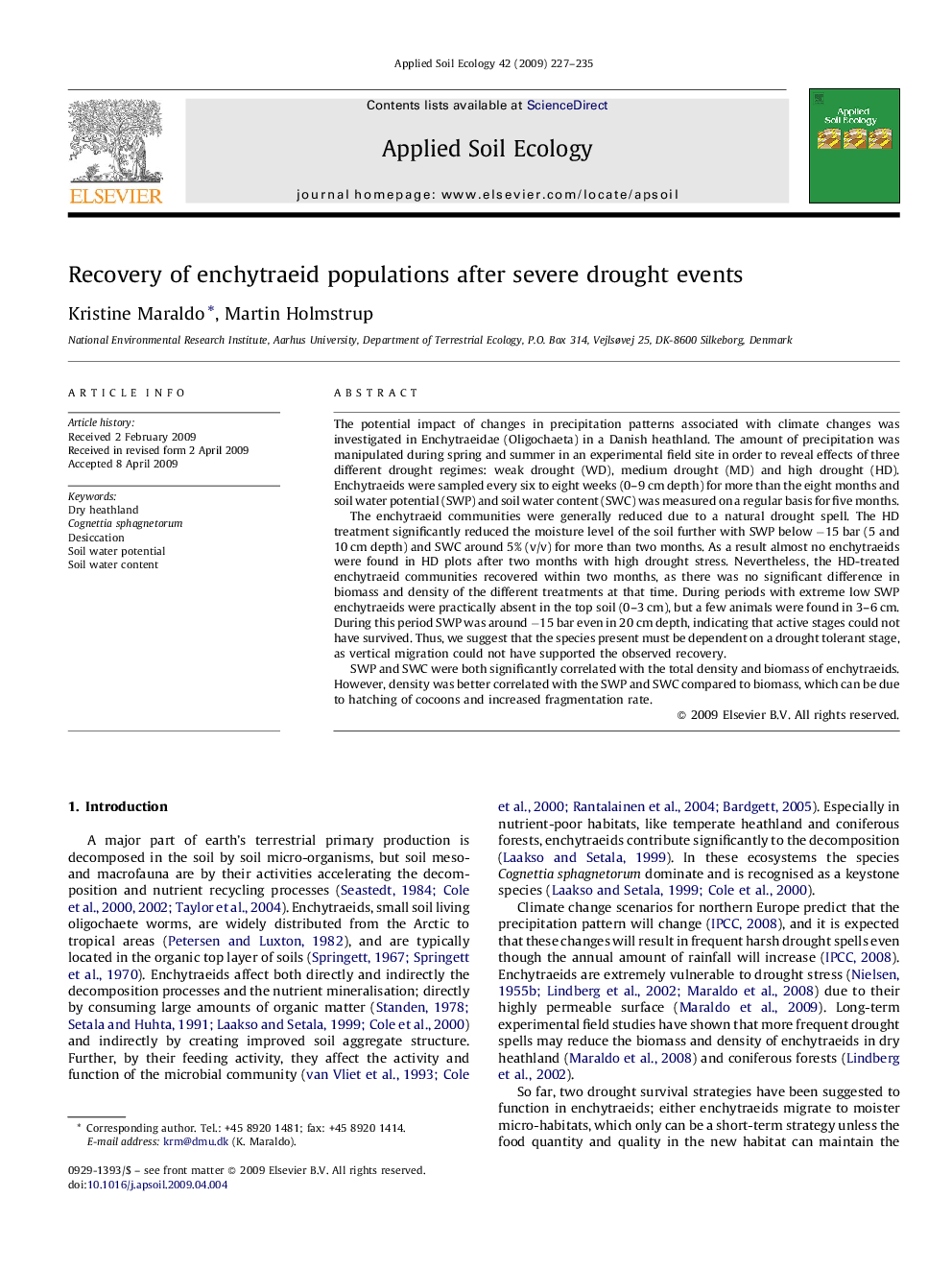| کد مقاله | کد نشریه | سال انتشار | مقاله انگلیسی | نسخه تمام متن |
|---|---|---|---|---|
| 4382870 | 1304236 | 2009 | 9 صفحه PDF | دانلود رایگان |

The potential impact of changes in precipitation patterns associated with climate changes was investigated in Enchytraeidae (Oligochaeta) in a Danish heathland. The amount of precipitation was manipulated during spring and summer in an experimental field site in order to reveal effects of three different drought regimes: weak drought (WD), medium drought (MD) and high drought (HD). Enchytraeids were sampled every six to eight weeks (0–9 cm depth) for more than the eight months and soil water potential (SWP) and soil water content (SWC) was measured on a regular basis for five months.The enchytraeid communities were generally reduced due to a natural drought spell. The HD treatment significantly reduced the moisture level of the soil further with SWP below −15 bar (5 and 10 cm depth) and SWC around 5% (v/v) for more than two months. As a result almost no enchytraeids were found in HD plots after two months with high drought stress. Nevertheless, the HD-treated enchytraeid communities recovered within two months, as there was no significant difference in biomass and density of the different treatments at that time. During periods with extreme low SWP enchytraeids were practically absent in the top soil (0–3 cm), but a few animals were found in 3–6 cm. During this period SWP was around −15 bar even in 20 cm depth, indicating that active stages could not have survived. Thus, we suggest that the species present must be dependent on a drought tolerant stage, as vertical migration could not have supported the observed recovery.SWP and SWC were both significantly correlated with the total density and biomass of enchytraeids. However, density was better correlated with the SWP and SWC compared to biomass, which can be due to hatching of cocoons and increased fragmentation rate.
Journal: Applied Soil Ecology - Volume 42, Issue 3, July 2009, Pages 227–235